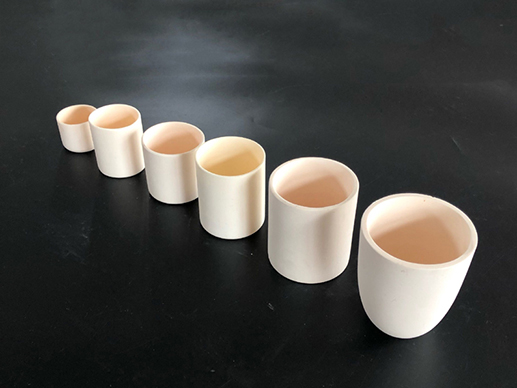Alumina Ceramic Crucibles Revolutionize Precious Metal Melting Industry

In the realm of metallurgy, the melting of precious metals has always been a delicate and critical process. This procedure requires precision, high temperatures, and materials that can withstand extreme conditions without compromising the purity of the metals being melted. Enter alumina ceramic crucibles, a revolutionary advancement that is transforming the precious metals melting industry.
Alumina ceramic, or aluminum oxide (Al2O3), has long been known for its exceptional properties, including high melting points, excellent thermal stability, and outstanding resistance to chemical corrosion. These characteristics make it an ideal material for various high-temperature applications, including crucibles used in melting precious metals such as gold, silver, platinum, and palladium.
In addition to their high-temperature tolerance, alumina ceramic crucibles are renowned for their chemical inertness. Precious metals, which are often used in sensitive applications such as electronics, jewelry, and aerospace, require melting environments free from contaminants. Alumina’s resistance to chemical reactions ensures that the purity of the metals is maintained, which is crucial for these high-precision applications.
Alumina ceramic crucibles are now a staple in industries that deal with the melting and refining of precious metals. Jewelry manufacturers rely on these crucibles to create high-quality gold and silver pieces without the risk of contamination. In the electronics industry, where even the slightest impurity can affect the performance of components, alumina crucibles ensure the highest level of metal purity. Moreover, in the aerospace sector, where precious metals are used for their superior properties, alumina crucibles play a vital role in the production process.
The adoption of alumina ceramic crucibles has also been a game-changer for research institutions and laboratories. These organizations often work with small quantities of precious metals and require precise control over the melting process. The reliability and performance of alumina crucibles enable scientists and researchers to conduct experiments with confidence, leading to new discoveries and advancements in material science.
Beyond their technical advantages, alumina ceramic crucibles also offer significant environmental and economic benefits. Traditional crucibles made from materials like graphite and clay tend to degrade faster, leading to more frequent replacements and increased waste. Alumina crucibles, with their superior durability and longer lifespan, reduce the need for frequent replacements, thereby minimizing waste and lowering operational costs.
Furthermore, the use of alumina crucibles can lead to energy savings. Their efficient thermal conductivity means that less energy is required to achieve and maintain the high temperatures needed for melting precious metals. This not only reduces energy consumption but also lowers the overall carbon footprint of the melting process.
The future looks promising for alumina ceramic crucibles as advancements in material science continue to enhance their properties. Researchers are exploring ways to further improve the thermal shock resistance and mechanical strength of alumina ceramics, which could lead to even more robust and versatile crucibles. Additionally, innovations in manufacturing techniques are expected to make alumina crucibles more accessible and cost-effective for a wider range of applications.

